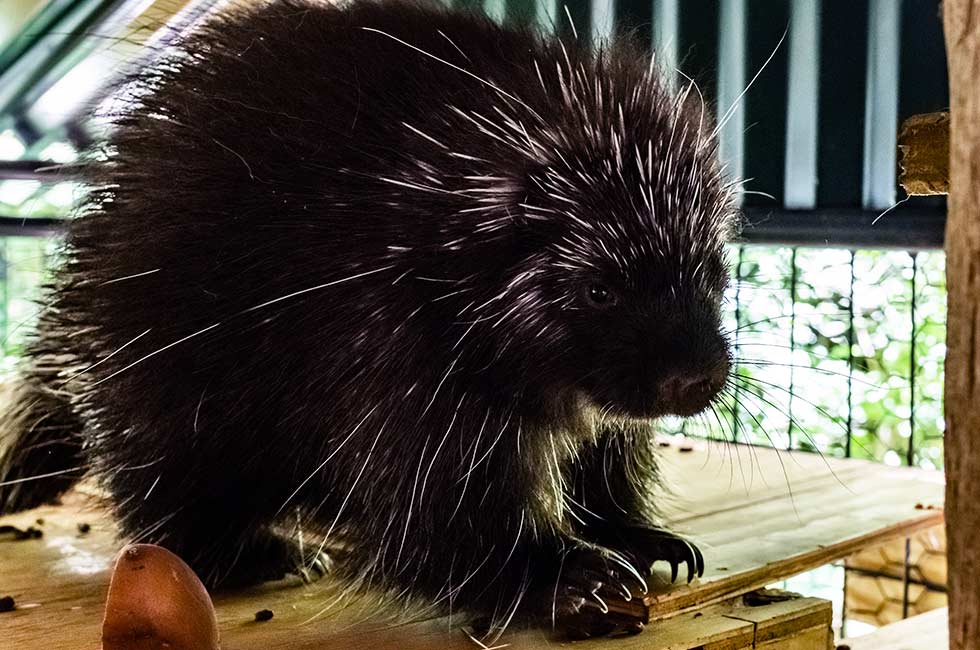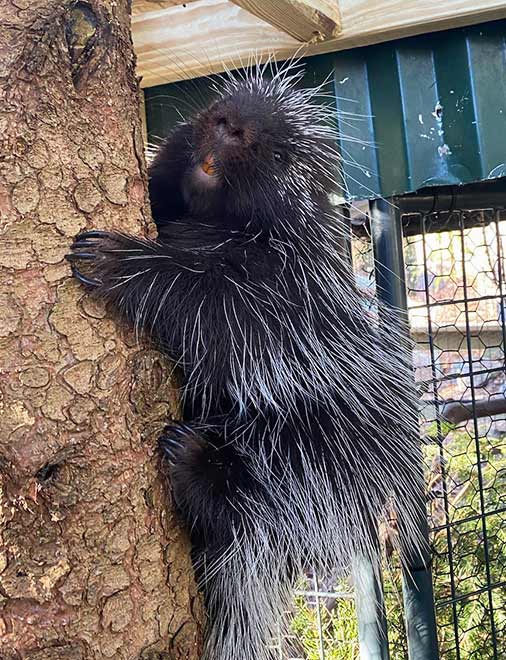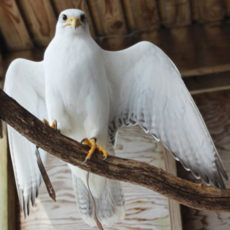Announcements


In April of 2022, the Sam and Myra Ross Farm & Wildlife Center welcomed a rehabilitated and imprinted porcupine. Ever since, the porcupine has become quite popular on our Brewster campus as well as building quite a fan base online, too. The following are frequently asked questions (and answers!) about the prickly 18-pound mammal that has crept into our hearts.
The porcupine was originally found as a baby, also known as a porcupette, by a dog that brought the baby porcupine to its owner. A certified rehabilitator and wildlife veterinarian became involved and worked together in the hopes of preparing the porcupine for release when it got older. Despite all of their best efforts, the porcupine became too accustomed to humans. It was determined that the porcupine would not be able to survive on his own in the wild. As a result, the rehabber contacted Green Chimneys to see if we would be willing to become the porcupine’s forever home. We agreed! Today, the porcupine’s presence is another opportunity for students to learn about wildlife rescue. Students are also experiencing what it means to care for another living being while respecting boundaries.
Typically, wildlife are not named at Green Chimneys. This helps the students (and all of us) remember that these animals were initially wild and are here only because of injury or illness that made them unable to return to nature. The porcupine is a part of the Wildlife Center and will live out their days at Green Chimneys. Students not only help with caregiving, but with help from staff, students also discover ways in which they can be wildlife ambassadors.
Porcupines in captivity are better protected from the threats that animals in the wild face such as predators, being hit by cars, and challenges accessing food. Porcupines in captivity typically live around 18 years. This particular porcupine will soon turn two years old. We hope that with good care, he will live for many more healthy years at Green Chimneys.
 Inside his enclosure here, the porcupine likes to move, climb, and waddle from one tree branch to another. And like most porcupines, he is nocturnal which means most of his activity is at night. And like with all animals at Green Chimneys, enrichment is an important part of both honoring each species and helping them carry out healthy lives. (Read more about enrichment for wildlife here.) Staff will update the enclosure from time to time moving branches or adding a new tree. They also include students in creating little enrichment boxes that encourage the porcupine to seek what he smells and to use his claws and teeth to find treats tucked within the box. We also have a wildlife veterinarian on standby in case there are any medical needs.
Inside his enclosure here, the porcupine likes to move, climb, and waddle from one tree branch to another. And like most porcupines, he is nocturnal which means most of his activity is at night. And like with all animals at Green Chimneys, enrichment is an important part of both honoring each species and helping them carry out healthy lives. (Read more about enrichment for wildlife here.) Staff will update the enclosure from time to time moving branches or adding a new tree. They also include students in creating little enrichment boxes that encourage the porcupine to seek what he smells and to use his claws and teeth to find treats tucked within the box. We also have a wildlife veterinarian on standby in case there are any medical needs.
A big misconception about porcupines is their assumed ability to throw their quills—this is not true. Should a porcupine become excited or scared, the muscles at the base of each quill can make them stand up. Their prickly exterior does serve as protection against predators and the quills easily detach upon touch.
This mammal is an herbivore meaning it does not eat meat and instead eats only plants—tree bark, greens, berries, leaves, flowers, twigs, etc. As many of our students will quickly tell you, sweet potatoes and corn are among this porcupine’s favorite foods. In honoring the porcupine’s boundaries, students do not interact with the porcupine but they do help care for him. One of their care tasks includes preparing the porcupine’s meals.
Here in the United States, the North American porcupine lives in northeastern states including New York, Michigan, Pennsylvania, and New England. They can be found in western parts of the U.S. and can even sometimes be found as far south as Mexico. The porcupine also lives in most of Canada. As babies, porcupines spend their time at the base of trees while their mom watches from above. Like many other wildlife, parents often gather food for their young or watch them from afar. For these reasons, it is important to first contact a wildlife rehabilitator before touching or relocating any wildlife. A rehabilitator can talk through what you are witnessing. They will help decipher what you are seeing, if it’s typical animal behavior, or if there are signs of injury or distress. (See more info on what to do if you’ve found an injured animal here.)
By donating to the Winter Campaign, you’ll actively show your support for the porcupine and the 300+ animals that enrich therapeutic education and clinical services for children with special needs. Please give to Green Chimneys today

Crowned the best for falconry in medieval times, gyrfalcons were once reserved for kings. As the largest falcon in the world, with exquisite plumage ranging from bright white to deep charcoal, gyrs are revered for their powerful skill of flight. Their long wings make hunting waterfowl from 3,000-feet-high a feasible and fantastical feat. This falcon was flown in the sport of falconry for several years.